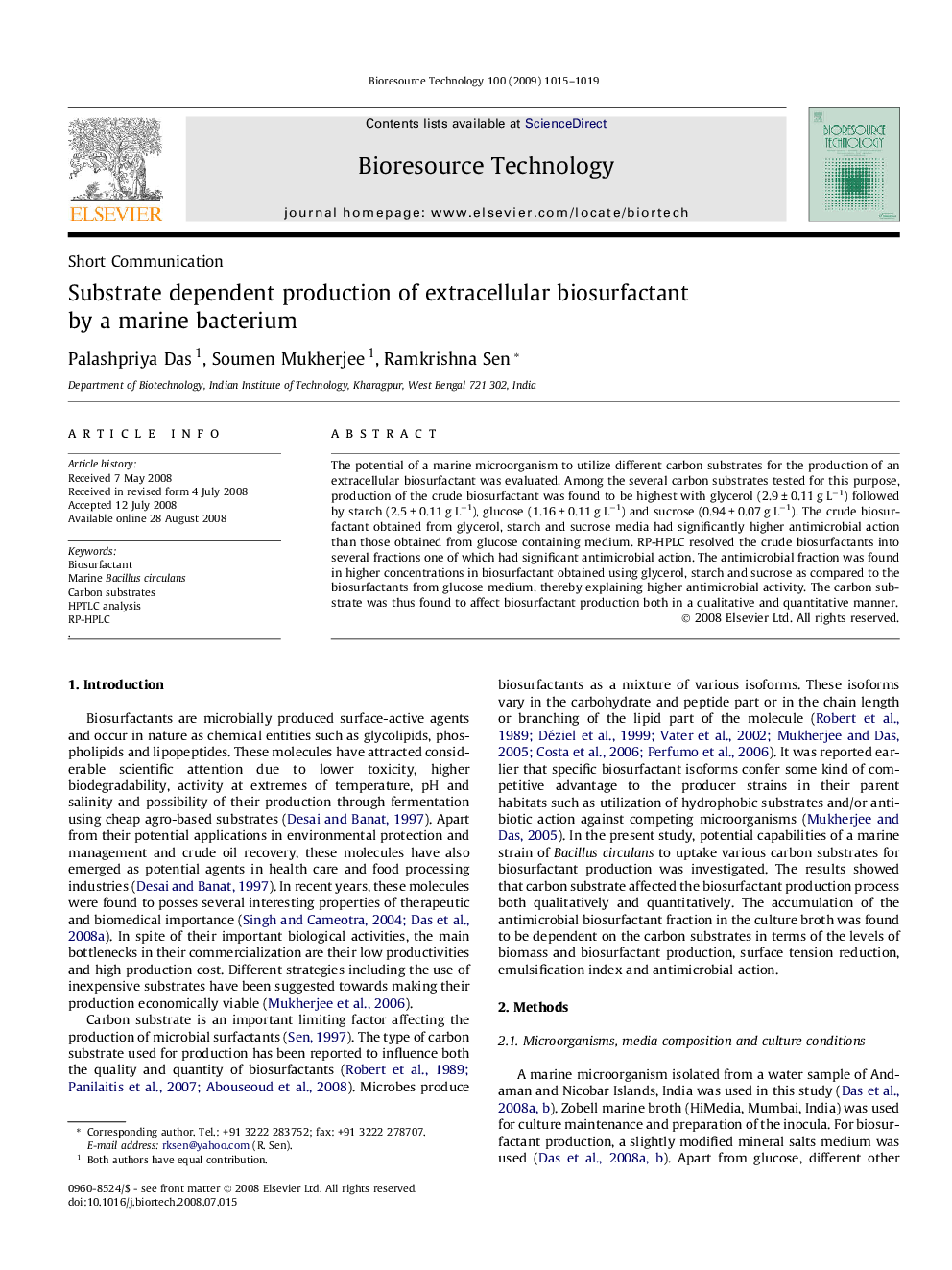| Article ID | Journal | Published Year | Pages | File Type |
|---|---|---|---|---|
| 683797 | Bioresource Technology | 2009 | 5 Pages |
The potential of a marine microorganism to utilize different carbon substrates for the production of an extracellular biosurfactant was evaluated. Among the several carbon substrates tested for this purpose, production of the crude biosurfactant was found to be highest with glycerol (2.9 ± 0.11 g L−1) followed by starch (2.5 ± 0.11 g L−1), glucose (1.16 ± 0.11 g L−1) and sucrose (0.94 ± 0.07 g L−1). The crude biosurfactant obtained from glycerol, starch and sucrose media had significantly higher antimicrobial action than those obtained from glucose containing medium. RP-HPLC resolved the crude biosurfactants into several fractions one of which had significant antimicrobial action. The antimicrobial fraction was found in higher concentrations in biosurfactant obtained using glycerol, starch and sucrose as compared to the biosurfactants from glucose medium, thereby explaining higher antimicrobial activity. The carbon substrate was thus found to affect biosurfactant production both in a qualitative and quantitative manner.
